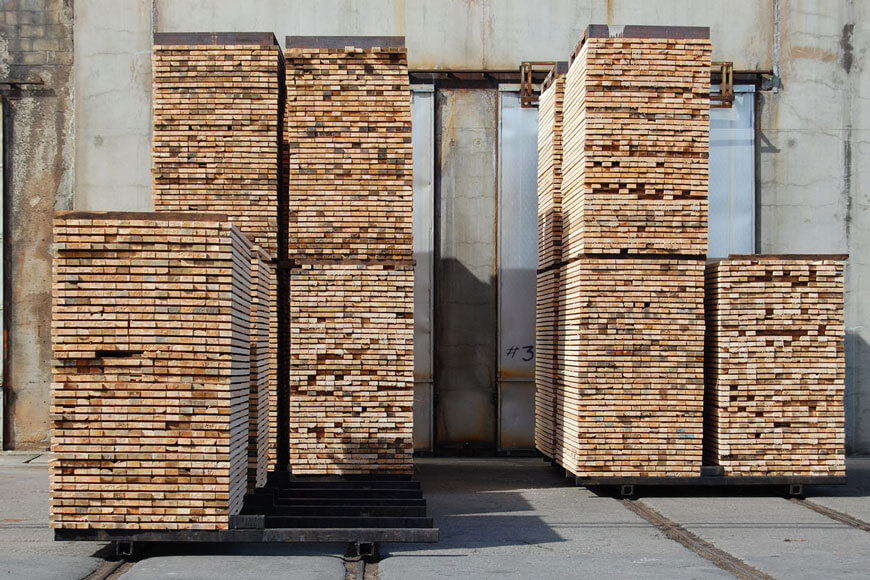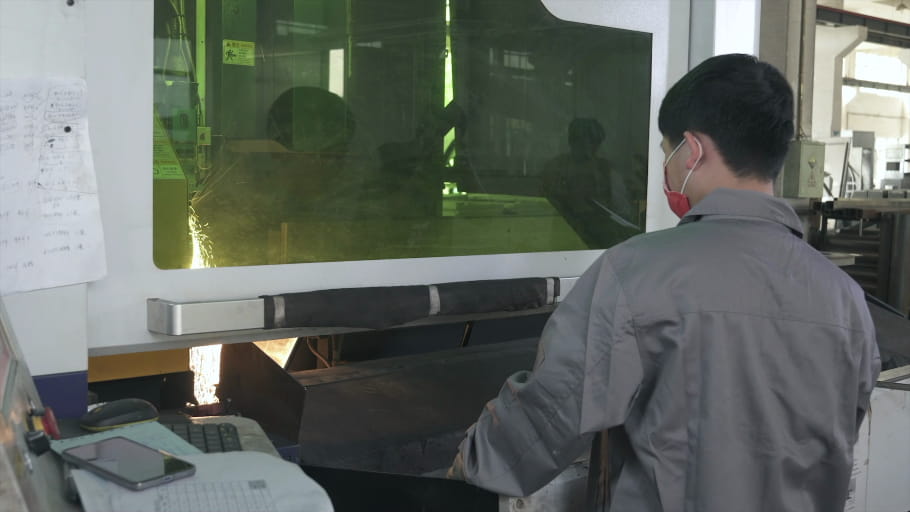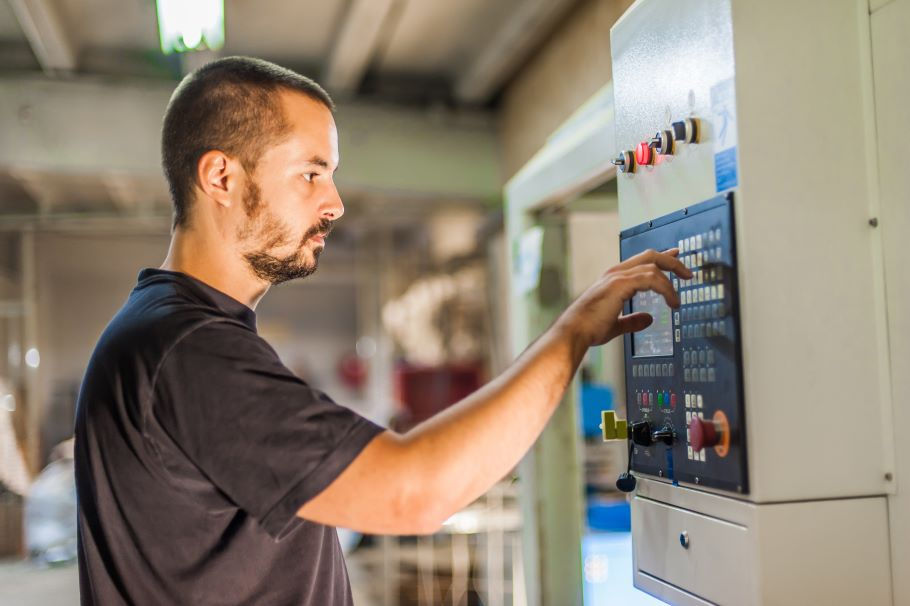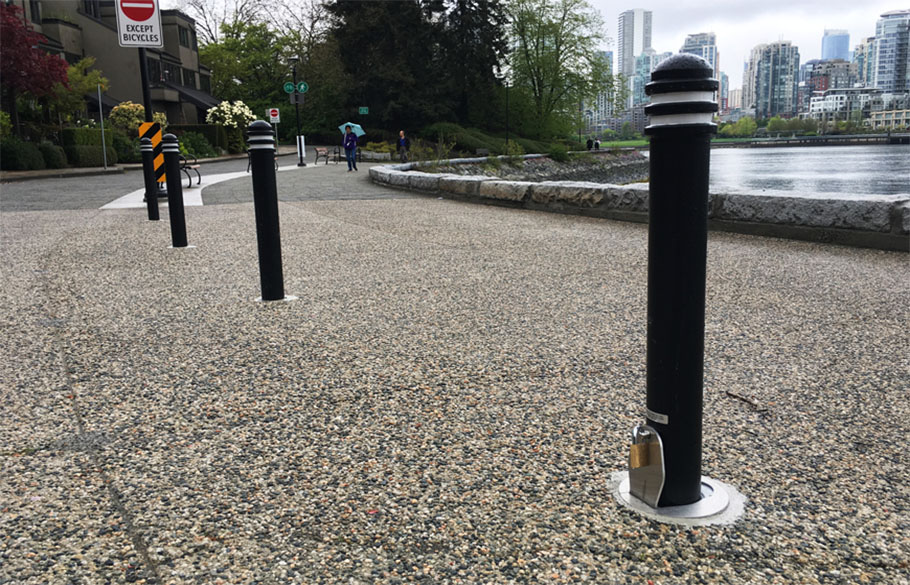Double flanged wheels are used in lumber drying operations
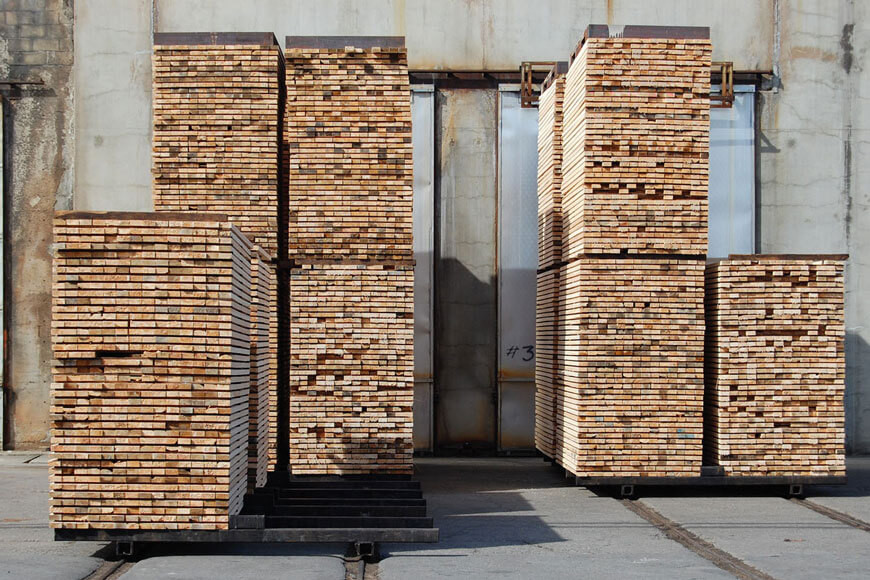
Lumber drying facilities are used to reduce the moisture content of wood. This involves wet or “green” lumber, which has a much higher mass than dry lumber, being carted into lumber drying facilities—a process that can be incredibly taxing on transfer cart wheels. This is largely why double flanged steel wheels are such an integral component to lumber drying kiln operations.
For kilns using metal rails to move lumber in and out of drying facilities, it’s common for these rails to lose their shape with repeated use. Bent or misshapen rails can be a major hazard when transporting drying stock. Safety is always a primary concern, and when it comes to overall productivity, even slight shifts in stacked lumber can affect drying times.
Double flanged cart wheels are ideal for situations where rails may be bent or untrue. Steel cart wheels can be installed so that they float (within limits) across an axle. As a wheel encounters a rail that bends in or out, the flange on either side catches the rail and pushes the wheel along the axle. This mechanism prevents the cart wheel from running off the tracks.
Why dry lumber?
Drying lumber, also known as “seasoning,” is an important process in improving the quality and usability of wood for several uses. The goal is to achieve an equilibrium moisture content, where the moisture in the wood is the same as its surrounding environment. Once this threshold has been achieved, the moisture content can change with shifts in ambient humidity without compromising the wood’s strength or integrity.
Key benefits to drying wood
Reduction of weight and transportation costs
Trees and fresh-cut logs contain significant amounts of water—often up to 50 percent of the actual wood’s weight. Shipping the wood with the extra water weight can add to transportation costs.
Protection from microorganisms
Insects, fungal growth, and other microorganisms can eat away and compromise the strength and integrity of wood structures. Using high kiln temperatures to dry wood will kill most unwanted organisms.
Increased strength
Wood is prized for its use in construction. Drying lumber ensures the best strength and consistency for builders.
Finishing or preservation treatments
Wood materials can undergo a range of processing treatments that can be compromised by moisture. Drying ensures that wood is ready for any additional treatment.
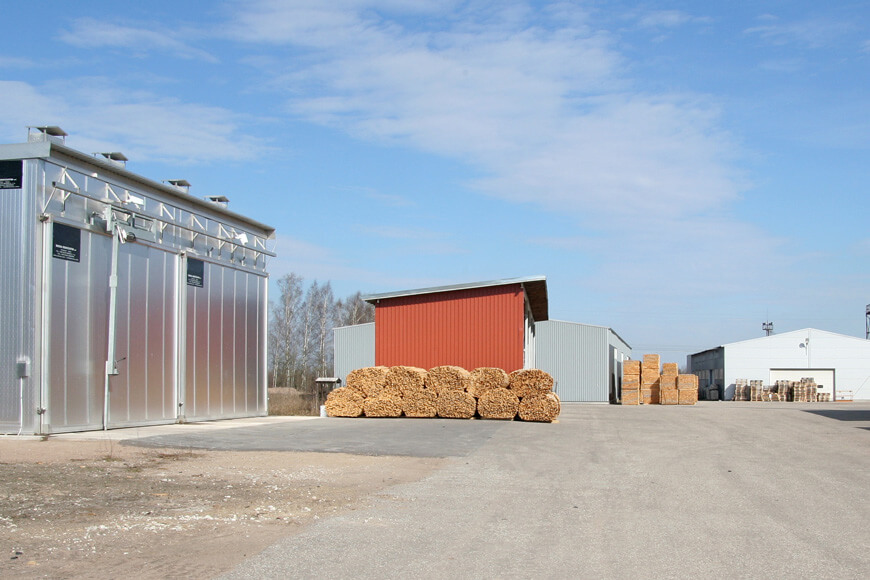
Air drying vs kiln drying
Both air drying and kiln drying are options for drying wood for commercial use. There are distinct differences between the two, as well as advantages and disadvantages for both processes.
Air drying
Air drying is the most natural method for drying wood. It is a more passive method that relies on ambient conditions of the surrounding environment to extract moisture. Although air drying can be a cheaper process, it requires a significant amount of time—typically several months, if not years.
Kiln drying
Kiln drying is an accelerated process that relies on the use of isolated chambers, called kilns, to extract moisture quickly. Most commercial lumber sold in hardware stores has been kiln dried.
Components of a wood-drying kiln:
- Insulated construction: Allows temperature and humidity to be controlled according to pre-determined drying schedules. Brick masonry or concrete are common building materials, but insulated aluminum is also common.
- Heating: Heat is provided by coils of steam-filled pipe, which can also be a source for regulating humidity.
- Air circulation: Airflow is necessary for circulating heat and removing moisture from lumber. Air is typically circulated by internal fans or blowers mounted on the outside.
Kiln drying dries wood more evenly than air drying—an important factor to consider when preserving the quality of wood structures. Case hardening can be a problem when wood is dried unevenly. When this happens, outside surfaces dry out and stretch around a damp core. When the core begins to dry, it is prevented from shrinking by the stretched and hardened surface. The tension between the competing shrink stages can cause the wood to warp or split. Wood that has split internally can be difficult to detect and is irreversible. Kiln drying also offers better control over the final temperature and humidity—especially important when drying different species of wood.
Kiln drying preparation
Uncut logs can be dried in kilns, but it is more common for them to first be sawn into boards and planks.
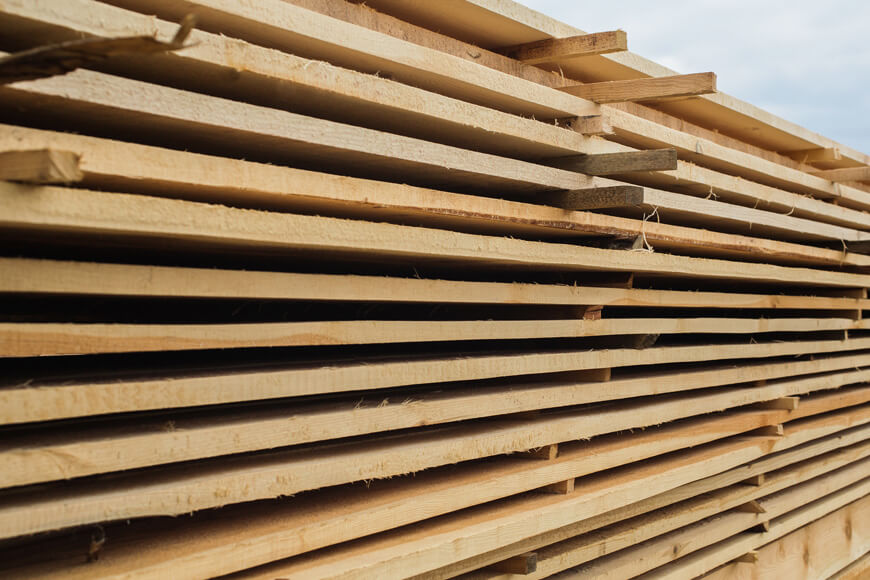
Benefits of sawing wood first:
- Faster drying rates: Increased surface area and decreased thickness
- Even drying rates: More uniform length and shape of individual wood pieces
- Prevention of moisture isolation and fungal decay: Removal of bark surfaces helps to increase drying rates
- Improved airflow: Sawed wood is stacked with spacers, called “stickers”, and raised above ground
Once stacked and placed into a drying kiln, the kiln environment is manipulated according to strict drying schedules. These schedules are designed to dry wood as fast as possible without compromising quality. They also vary according to the species of wood, its thickness, and intended use. Most drying schedules begin at a higher humidity with lower heat and gradually reverse these conditions. Existing moisture content and material density can also affect drying times and processing techniques.
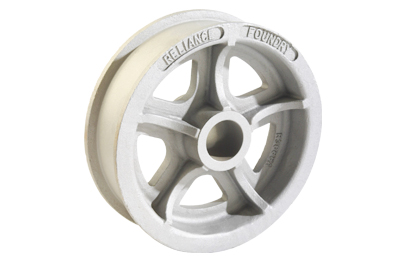
Steel cart wheel applications
Steel is an exceptional material for rail applications. Compared to other materials, it offers an ideal balance of strength and hardness to prevent early wear and potential failure. This minimizes maintenance time and keeps operations running with maximum output and profitability. Double flange metal cart wheels are ideal for lumber kiln operations, as they can be installed to float slightly to accommodate rails that have been misshapen from heavy-duty applications.
Sources
Meier, Eric. “Drying Wood at Home.” The Wood Database.
Prestemon, Dean R. “Forestry Extension Notes: Kiln Drying Lumber.” Forestry Extension. 1999.
Reeb, James E. “Drying Wood.” University of Kentucky.
Tsoumis, George Thomas. “Wood.” Encyclopedia Britannica.

